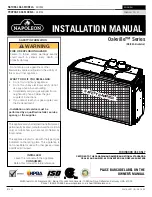
Reflective surfaces
The laser beam is almost completely deflected on reflective surfaces. This means that
an object hit by the deflected beam may be detected instead of the reflective surface.
Figure 9: Reflective surfaces
Small objects
Objects that are smaller than the diameter of the laser beam cannot reflect the laser
light’s full energy. The portion of the light beam that does not reach the object is lost. If
all of the light reflected to the sensor is insufficient, the object may not be detected.
The portion of the light that does not reach the front object can be reflected by a larger
object in the background. If all of the light reflected to the sensor is sufficient, this
object is detected.
Figure 10: Object smaller than the laser beam diameter
3.5.7
Filters
The device has digital filters for pre-processing and optimizing the measured distance
values. They enable the device to be adapted to meet the specific requirements of the
respective application.
The filters can be combined without restrictions. If several filters are active, then the
filters are applied sequentially to the results of the preceding filter. The processing
sequence is as follows:
•
Scan range filter
•
Edge filter
•
Median filter
•
Average filter
The active filter functions affect the output measured values. It is not possible to recal‐
culate the original measured values from the filtered output values. For this reason, cer‐
tain combinations of filters might not be advisable.
A particularly effective way to reduce the data in a scan is to restrict the scan range
(reducing the measurement points). A good way of reducing data in multiple scans is to
use the average filter (reducing the event rate) or, alternatively, to select a higher output
interval.
3.5.7.1
Scan range filter
The scan range filter is used to restrict the angular range output per scan.
3
PRODUCT DESCRIPTION
20
O P E R A T I N G I N S T R U C T I O N S | LMS4000
8023198//2018-06-18 | SICK
Subject to change without notice
















































